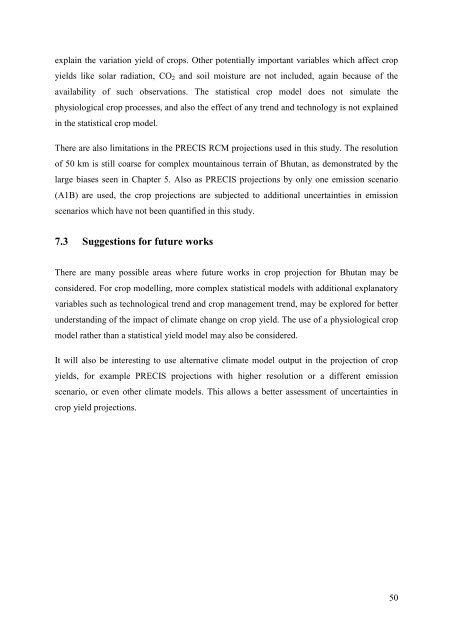UNIVERSITY OF READING - E-Library - WMO
UNIVERSITY OF READING - E-Library - WMO
UNIVERSITY OF READING - E-Library - WMO
You also want an ePaper? Increase the reach of your titles
YUMPU automatically turns print PDFs into web optimized ePapers that Google loves.
explain the variation yield of crops. Other potentially important variables which affect cropyields like solar radiation, CO 2 and soil moisture are not included, again because of theavailability of such observations. The statistical crop model does not simulate thephysiological crop processes, and also the effect of any trend and technology is not explainedin the statistical crop model.There are also limitations in the PRECIS RCM projections used in this study. The resolutionof 50 km is still coarse for complex mountainous terrain of Bhutan, as demonstrated by thelarge biases seen in Chapter 5. Also as PRECIS projections by only one emission scenario(A1B) are used, the crop projections are subjected to additional uncertainties in emissionscenarios which have not been quantified in this study.7.3 Suggestions for future worksThere are many possible areas where future works in crop projection for Bhutan may beconsidered. For crop modelling, more complex statistical models with additional explanatoryvariables such as technological trend and crop management trend, may be explored for betterunderstanding of the impact of climate change on crop yield. The use of a physiological cropmodel rather than a statistical yield model may also be considered.It will also be interesting to use alternative climate model output in the projection of cropyields, for example PRECIS projections with higher resolution or a different emissionscenario, or even other climate models. This allows a better assessment of uncertainties incrop yield projections.50
















